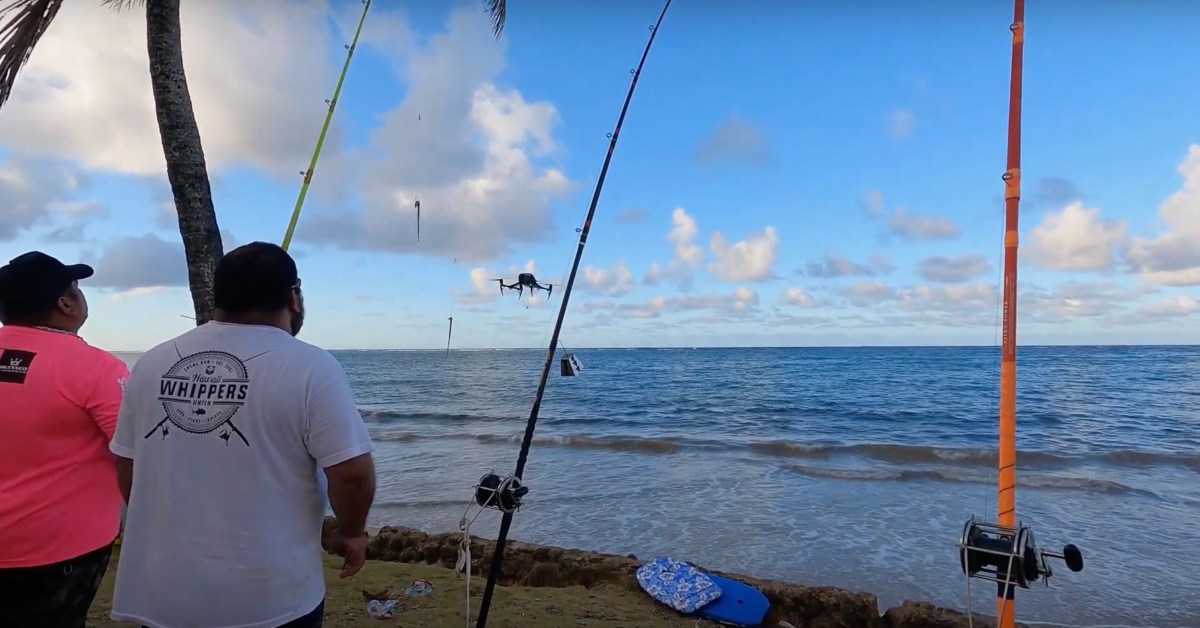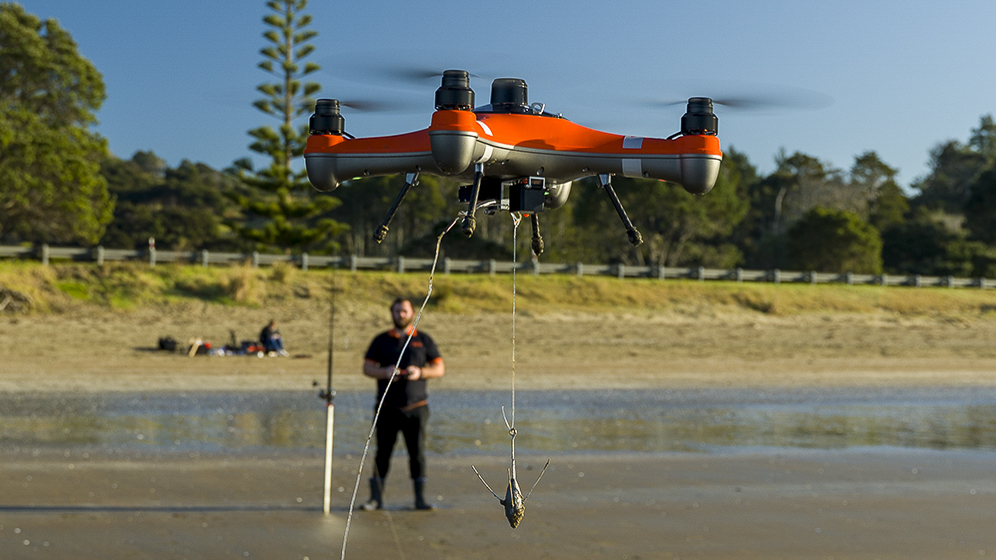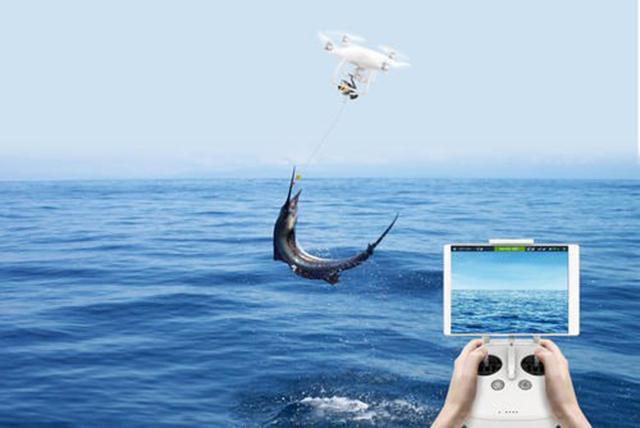
A drone can be used to view the water around your property if you're a keen fisherman living in Australia. Drones are equipped with many features including a GPS positioning and GPS receiver, a GPS transmitter, a GPS receiver, an angle-adjustable camera, and a mechanical payload. There are also fishing lines available that can be used for fishing. They are very stable and secure. One such example is the SKY RIGGER drone.
SKY RIGGER is a drone fishing line
The SKY RIGGER, a flexible fishing system for drones, allows you fish from the air using minimal effort. The system features two rotating leg clamps that can attach to various drone models. The release mechanism is designed with a bayonet-style connection and a cam-lock arm to open the line clamps quickly. Unlike other drones, the Sky RIGGER requires no batteries and can accommodate all fishing techniques safely.
For when a fish strikes your fly, the SKY RIGGER features an automatic release mechanism. You can also release the line manually with your hand or rod. This feature is included on all models. It is highly recommended that you buy a Phantom 3 before buying the new SKY RIGGER. Here are some pros and cons to the new line system.
It has a mechanical payload release
A good drone's mechanical payload release is one of its most important characteristics. Many are designed to make it easy for anglers to remove their fishing line. However, some models do not have a release mechanism. Instead, to remove the drone from its fishing line, the user must "yank” it. This can be frustrating, especially for people who aren’t comfortable using their fingers to release the line.

A payload release mechanism is also an important feature. When a fish strikes, the payload must be able release the line from the drone. Catch and release fishing is a skill that should be practiced before you attempt it. Many people have experienced good results using the DJI Phantom drone. However, this technology is not yet comparable to other fishing drones.
It is equipped with a GPS positioning system
Rippton is an Australian-Dutch joint venture that specializes technology-oriented products for fishing. It was established to help anglers improve their success rates and create products that will enhance the enjoyment of fishing. Rippton’s Mobula drone comes with a GPS position system and remote release. The Mobula is able to hold bait on the surface, resist kite clips and is environmentally friendly.
It's lightweight, weighing just 3 pounds, and can fly for up to 18 minutes. It has a high tech GPS system that can be controlled from as far as 2,000 meters away. It is capable of flying at 1000 meters (or half a kilometer) range and has intelligent flight modes. Its point feature allows it high-quality images of the surrounding environment. You can see great images of fish thanks to its high-resolution digital camera.
It includes a failsafe safety feature
Aerokontiki's fisherman drone has a failsafe function: It monitors battery levels and releases fishing line when necessary. In case of battery failure, it will land back on dry ground to continue its mission. It has industrial-grade flight controls and can operate wherever it goes without recalibration. This drone is also waterproof, so you can use it even in the most difficult water spots.

FAQ
Is it safe to fly a drone while driving?
Driving a drone is dangerous, as it could cause an accident or crash into another vehicle. Also, you could hit pedestrians or animals. A collision with power lines, trees, buildings, or power lines could cause serious damage to your vehicle.
Is Drones Prohibited?
The FAA has banned drones from flying near airports, stadiums, sporting events, nuclear power plants, hospitals, prisons, and other restricted areas. They do allow drones to fly at night with GPS technology.
What's the difference between quadcopters and hexacopters?
A quadcopter is an four-rotor helicopter which flies in the same manner as a conventional helicopter. It has four rotating rotors. The hexacopter can be described as a quadcopter but has six rotors, instead of the usual four. Hexacopters offer more maneuverability and stability than quadcopters.
Statistics
- According to the multiple listing service (MLS), houses and apartments with drone photographs are up to 68 percent more likely to sell than those without pictures. (thedroneu.com)
- With the top 10% making over $100/h and the bottom 10% making as low as $10/h. (dronesgator.com)
- According to Indeed, a drone pilot gets paid $25.73 per hour on average in the US. (dronesgator.com)
External Links
How To
How to Fly Drones for Beginners
A drone is a remote-controlled aircraft used for aerial photography, cinematography, surveillance, scientific research, and hobby purposes. Drone technology has existed since World War II. DJI's Phantom series quadcopters were first commercially available in 2010. From beginner-friendly drones such as Parrot AR Drone 2.0 through professional-grade multirotor craft like DJI Mavic Pro, many types have been available.
There are many methods to fly a Drone, including
-
Remote control – This technique uses a control device attached directly to your hands that allows you steer the drone around its flight path. There are two main types, On/Off switches (like radios) and joysticks.
-
Manual Control - Using a smartphone app, this method allows users to remotely operate the drone via GPS coordinates. The app will give you instructions.
-
Autonomous Flight - This method involves leaving the piloting duties to the drone itself. It allows the drone to fly independently without any human intervention. A drone must have a builtin camera and sensors capable to capture images and other data.
-
Triggered Flight – This method is very similar to manual flight. The pilot creates a route that the drone will follow until it reaches the destination. After the program is complete, the drone automatically returns to the ground.
-
Landing Gear- Some drones include landing gear that allows for safe landing if the power goes out or they run out of batteries.
-
Goggles – Pilots often wear goggles while flying to keep themselves safe from any debris.
-
Camera - Some drones are equipped with cameras allowing you to capture photos and videos from above.
-
Obstacles: Some drones are equipped with obstacle avoidance systems to prevent them from hitting obstacles.
-
Speed - Some drones can travel at speeds over 40 mph.
-
Battery Life – Most drones will last 20 minutes to three hours depending on how powerful they are.
-
Range - Some drones can travel upto 30 miles depending on their models.
-
Power source: Some drones will require an external power source while others can be powered by internal batteries.
-
Weight – Some drones are less than one pound, while other models can be up to four pounds.
-
Size - From small drones that can be carried in the palm of one's hand to larger drones that weigh over 50 pounds, drones come in a variety of sizes.
-
Price - High-end drones can go for thousands of dollars, while low-cost models start at $100.